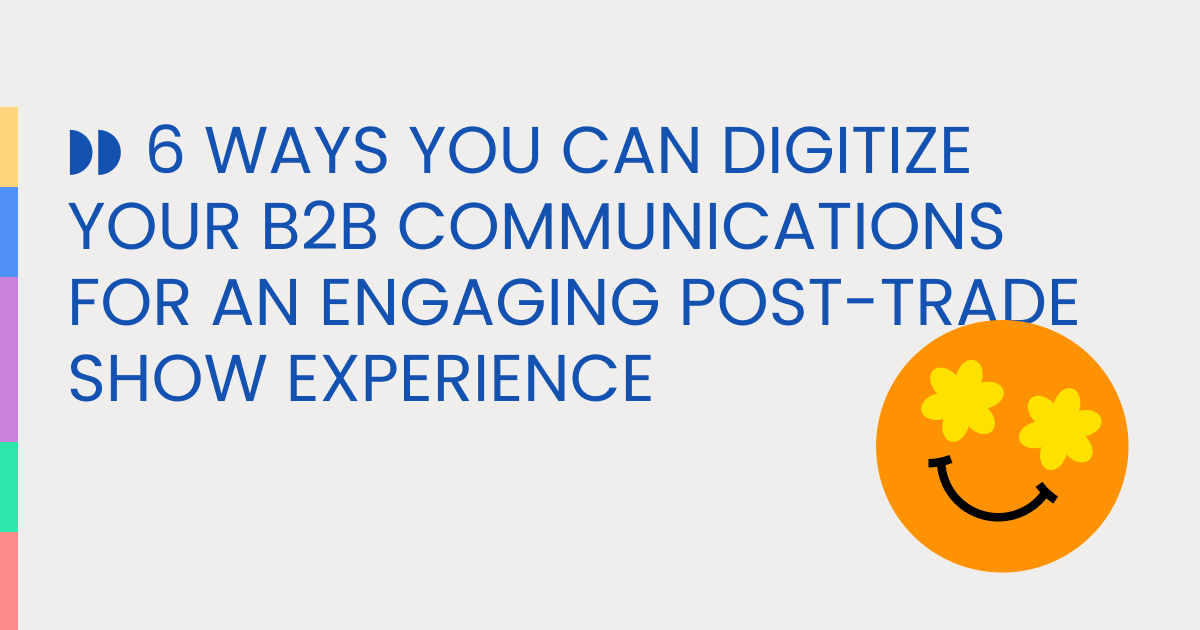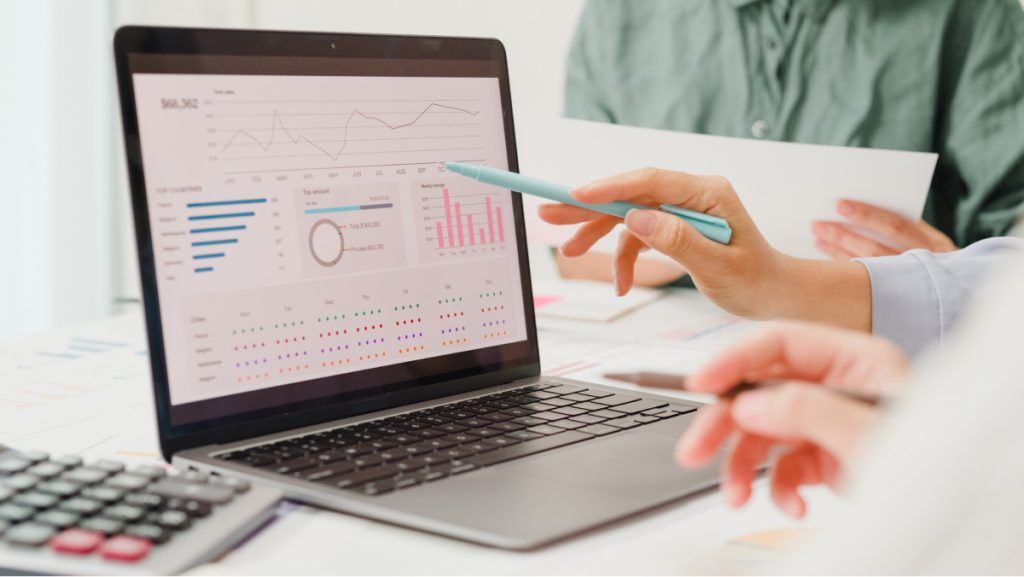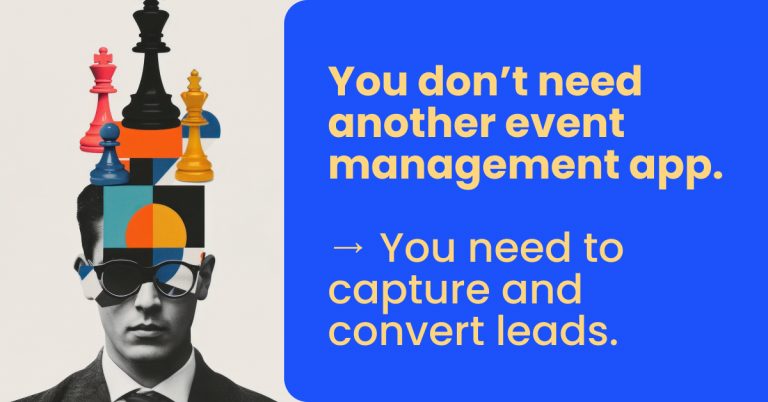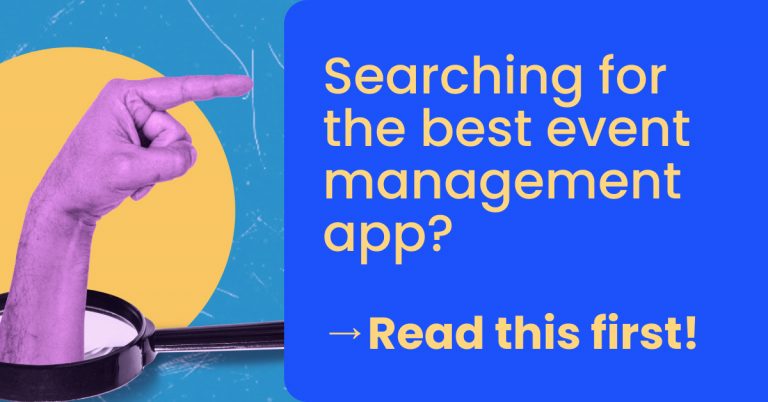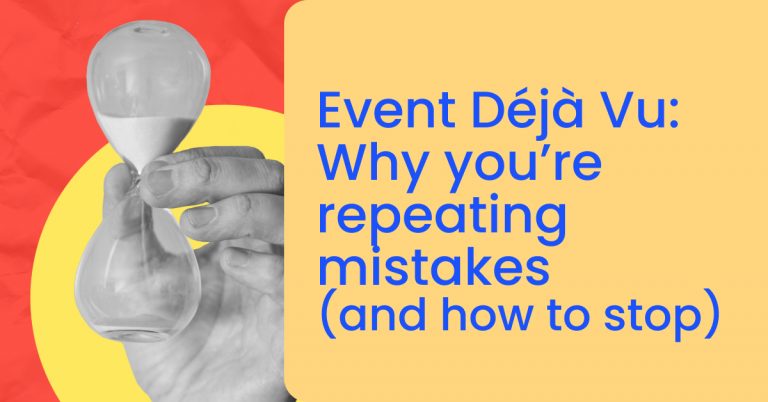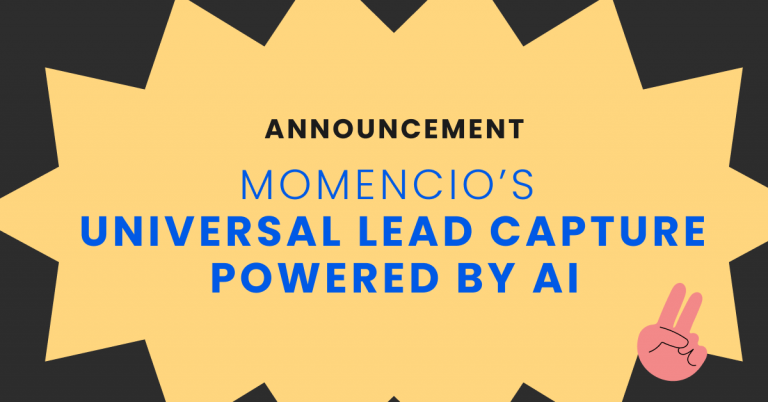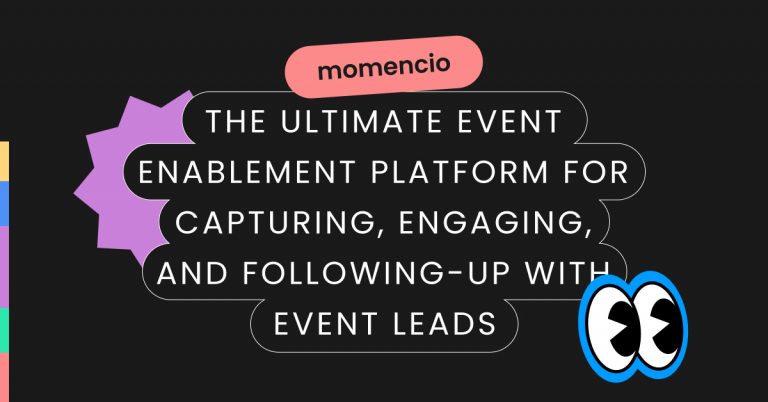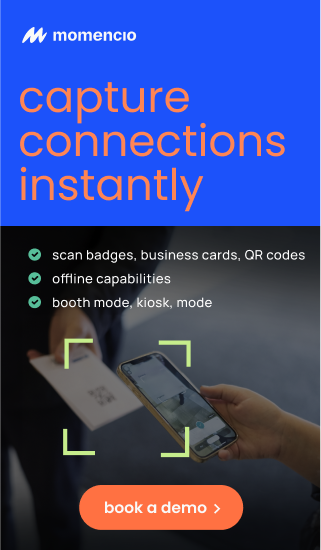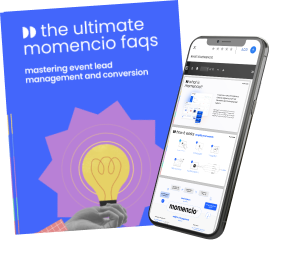How can you keep your lead connected, engaged, and interested during this small but important window and in the future and create an Engaging Post-Trade Show Experience? The cost of acquisition for enterprise B2B leads is soaring; in some industries, leads may cost several thousands of dollars to acquire and involve long sales cycles and high-touch event marketing. In fact, on average, 11% of a company’s revenue is dedicated to the marketing budget in the United States.
With a sizable portion of company revenue dedicated to developing and scaling the business, the pressure to multiply that investment seems obvious, especially in the context of post-trade show engagements. And yet, it could take as little as 72 hours for that expensive prospect you connected with at a trade show or convention to forget you or prioritize the project you discussed altogether.
TL;DR: Digitizing the post-trade show experience helps businesses stay engaged with prospects. Use digital tools like CRM integration, email automation, and personalized content to maintain communication, nurture leads, and convert them into clients long after the event ends.
6 ways to digitize your B2B communications for an engaging post-trade show experience
Start digitizing your B2B marketing efforts
Digital marketing is a sweeping term that can include all of your online efforts, like PPC ads, outbound campaigns, social media, etc. But digitized marketing speaks more directly to cloud-based and easily accessible content, content that builds relationships, educates prospects, generates interest, and ultimately closes contracts.
So, how exactly do you do that? Here are 6 ideas to get your digital marketing motor running:
Branded, event-specific email templates
Before your team heads to their next trade show or convention, have your marketing team develop a simple email template that includes your branding and the branding of the event. Each evening, sales reps should utilize that template to reach out to contacts they met that day, personalizing the language to mention items discussed.
Event-specific landing pages
Develop a landing page, especially for leads who come from the event in question, again using the branding they will recognize from their time on the show floor. Here, you can speak more directly to the specific audience than on your general website (e.g., OB-GYNs who need software for tracking high-risk pregnancy data vs. all doctors seeking software that tracks all kinds of medical data). Include links to brochures, case studies, and other content that will resonate with this audience.
Personalized microsites
Go one step forward and create a personalized microsite for each new lead captured at the event (platforms like momencio allow you to do so). Adding their name and company logo is a simple touch that can make a real connection, and based on your conversations at the booth and their known needs or pain points, you can tailor the materials this microsite links to.
Behavior-tracking collateral
Are those collateral pieces you are linking to? Be sure they aren’t just PDFs hosted online. Use a marketing platform that allows you to monitor not only the number of clicks on a link but also to see who exactly clicked it and how long they viewed the document afterward. Some systems even allow you to turn your static PDFs into dynamic flipbooks and provide further analytics about what areas readers lingered on or where they zoomed in. All this can help you see what your leads are interested in more quickly.
Lead nurturing
An automated workflow that continually feeds leads information of interest can help turn lukewarm leads into closable customers. A well-designed workflow, based on the collateral your lead is engaging with, will be able to generate emails to the prospect with relevant material they may find useful.
For instance, if a lead clicks and spends significant time on the section of a product guide that discusses your software’s CRM feature, send them a blog post on the most popular tools your CRM has. You can also send a case study about how a current client utilized the CRM to connect better and win over their customers. Read in this article about 5 effective lead nurturing strategies (with examples).
Personalized communications
The above-planned and automated communication workflows serve as the backbone for ensuring continual connection with high-quality leads. But they won’t be enough. True personal service will always be required, so use automated communication to feed your one.
If you see that on Monday, your contact was sent a secondary piece of content based on their previous actions, send a casual email on Tuesday to check in, see what they thought of it, and share some of your thoughts on the topic. A lead will always be more apt to respond to your invitation to discuss it over a call than by clicking on a CTA button in a generic email.
A more tailored, continual, & valuable connection
These digitized communication tactics not only save the time and money that old-fashioned print collateral requires but also provide a more tailored, continual, and valuable connection with your leads. And by kicking off this process in your hotel room the night of a trade show, you can ensure the dynamic you worked hard to create on the trade show floor will not be lost in the shuffle of return flights, unpacking, and catching up that occurs post-show.
Looking for a platform that can provide some of these features, like personalized microsites? Learn more about how momencio can streamline your process from that first in-booth handshake through the entire sales funnel.
Maximizing your post-trade show experience: strategies to keep leads warm
The critical 72-hour window
The importance of the first 72 hours following a trade show cannot be overstated. This window is critical for cementing the relationships initiated at the event. Engaging leads quickly and effectively during this period can be the difference between a lead that converts and one that goes cold. How can you ensure your lead nurturing process is both efficient and impactful, transforming a brief encounter into a lasting business relationship?
Strategic follow-up communication
A well-crafted follow-up strategy is crucial for maintaining the momentum gained from the trade show. This involves more than just a generic ‘thank you’ email. Tailoring your message to reflect the conversations had at the trade show demonstrates attention to detail and genuine interest in solving the lead’s challenges.
Leveraging content for continued engagement
Content is king in the post-trade show phase. Providing valuable, informative content that addresses the specific needs and interests of your leads keeps your brand at the forefront of their minds. This could be in the form of targeted blog posts, whitepapers, or case studies that resonate with the conversations we had during the trade show.
Utilizing social media for personalized engagement
Social media platforms offer a unique opportunity for personalized post-trade show engagement. Connecting with leads on LinkedIn, for example, and sharing relevant content or industry news keeps the conversation going in a more informal, engaging manner.
The role of event marketing platforms
Leveraging an advanced event marketing platform like momencio can significantly streamline the post-trade show experience. From personalized email templates and microsites to behavior-tracking analytics, momencio provides the tools needed to keep your leads engaged and interested. Its suite of features allows for a more nuanced approach to lead nurturing, ensuring that each lead is treated as an individual with distinct needs and preferences.
Conclusion
A successful post-trade show experience hinges on your ability to digitize and streamline B2B communications. By incorporating strategies like personalized follow-ups, digital content sharing, and advanced analytics, you not only maintain engagement but also convert prospects into long-term partners. As trade shows evolve, adopting these digital tools ensures your business stays ahead, enhances connections, and drives measurable results. Now is the time to rethink your post-event strategies and take advantage of the tools that transform engagement into grow
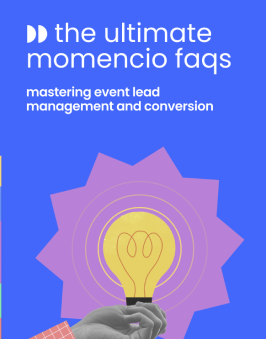
FAQs
- What are post-trade show strategies?
- Post-trade show strategies refer to the actions and tactics implemented by businesses after participating in a trade show or convention. These strategies aim to capitalize on the leads and connections made during the event, nurturing them further to drive conversions and sales.
- Why are post-trade show strategies important?
- Post-trade show strategies are crucial because they help businesses maximize the return on investment (ROI) from their participation in events. Trade shows often involve significant expenses in terms of time, money, and resources. Effective post-trade show strategies ensure that the leads and prospects acquired during the event are engaged, nurtured, and converted into customers, thereby justifying the investment made in attending the trade show.
- How can digitized marketing enhance post-trade show strategies?
- Digitized marketing plays a pivotal role in enhancing post-trade show strategies by leveraging technology and online platforms to engage with leads more effectively. Through digitized marketing efforts such as personalized email templates, event-specific landing pages, personalized microsites, behavior-tracking collateral, lead nurturing workflows, and personalized communications; businesses can maintain continuous engagement with leads acquired at trade shows, providing them with relevant content and information tailored to their needs and interests.
- What are the benefits of using personalized microsites for post-trade show follow-up?
- Personalized microsites offer several benefits for post-trade show follow-up. They provide a dedicated online space for each lead captured at the event, allowing businesses to deliver customized content, messages, and resources based on the individual’s preferences and interactions during the trade show. Personalized microsites enhance the personalization and engagement levels of follow-up communication, making leads feel valued and increasing the likelihood of conversion.
- How can businesses measure the effectiveness of their post-trade show strategies?
- Businesses can measure the effectiveness of their post-trade show strategies through various metrics and analytics. Key performance indicators (KPIs) such as lead engagement, email open rates, click-through rates, conversion rates, and return on investment (ROI) can provide insights into the success of post-trade show initiatives. Additionally, leveraging marketing automation platforms and analytics tools enables businesses to track and analyze the performance of their digital marketing efforts in real-time, allowing for continuous optimization and improvement of post-trade show strategies.
